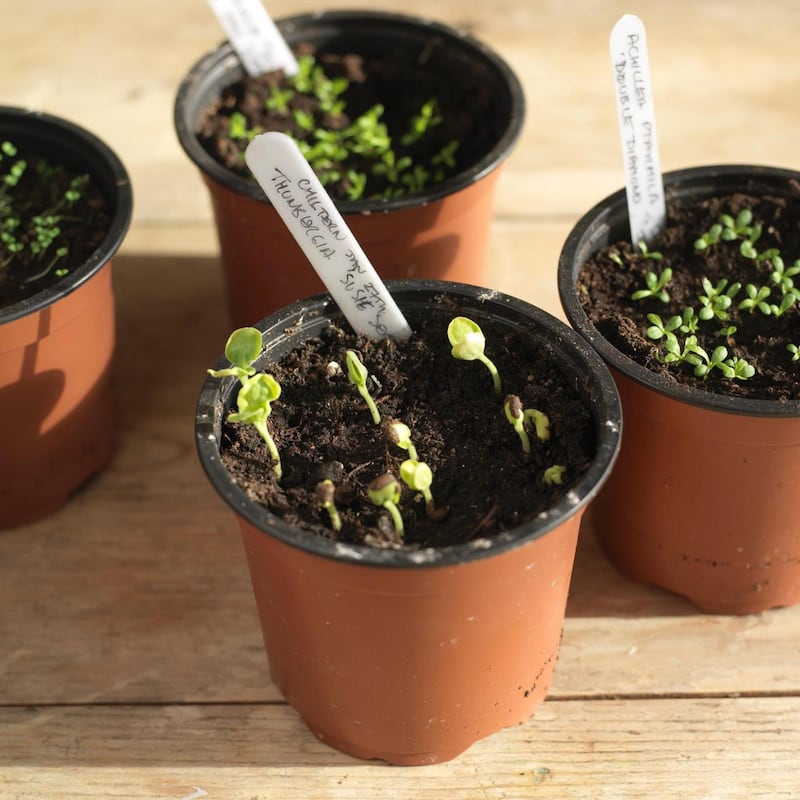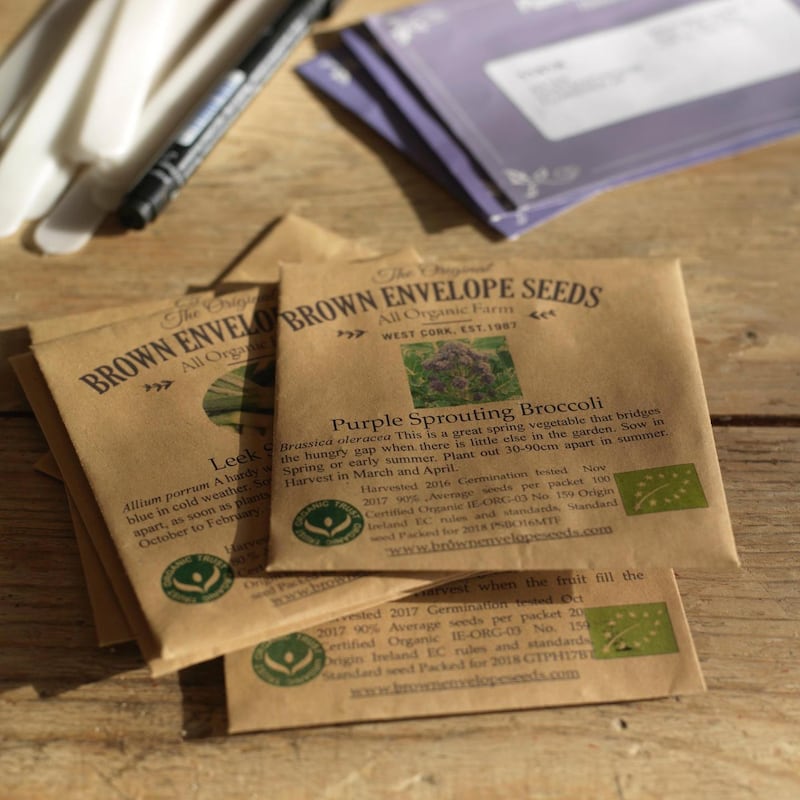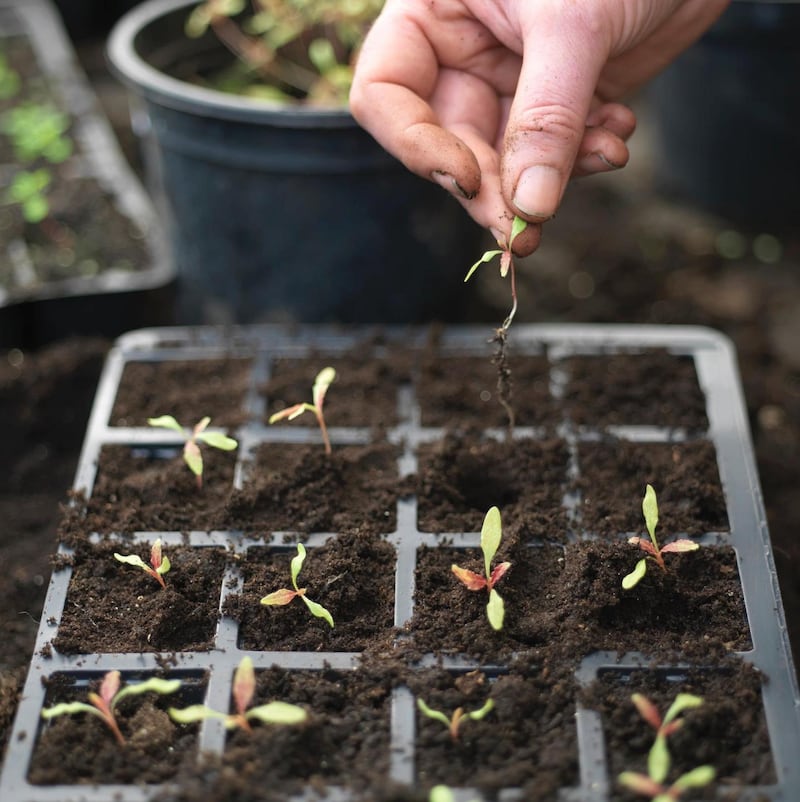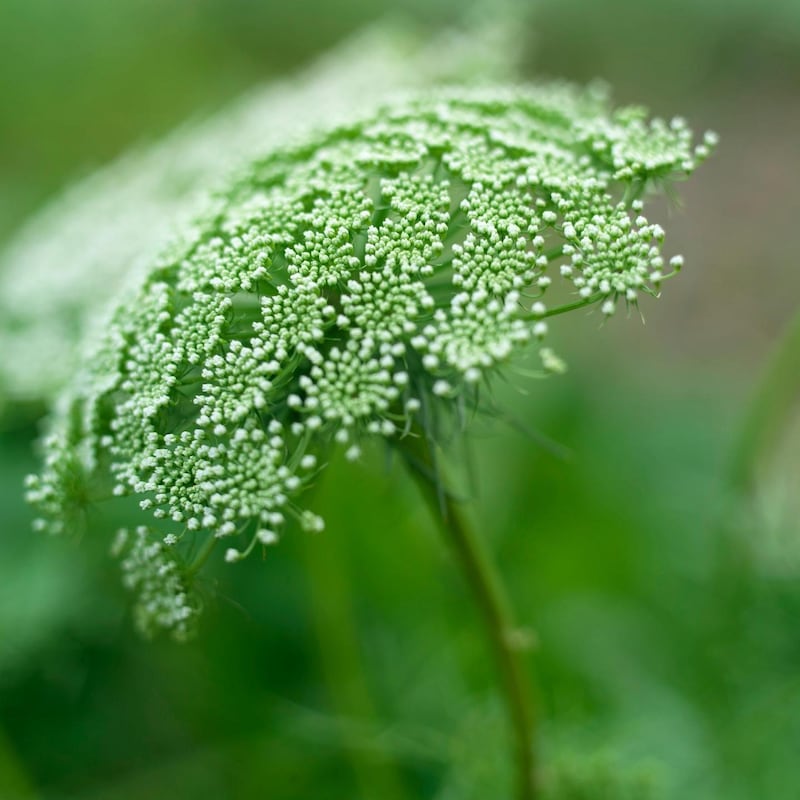If I had a euro for every time I’ve been asked to share the secrets of raising plants from seed, I’d be . . . well, not exactly rich, but certainly possessed of a tidy little nest egg. Similarly, “I have no luck with seeds” is an expression that I hear a lot.
Yet the simple truth is that it’s got very little to do with luck and instead a whole lot more to do with dodging some common pitfalls and following a few immutable rules of horticulture.
So if you’ve spent the past few weeks staring with increasing frustration at your freshly-sown seed trays/pots for any tiny sign of life, then this column is for you. Because I know all too well that bitter sense of disappointment when nothing – nothing! – emerges, as well as the pure, delicious delight when it does. Here’s what I’ve learned . . .

Timing matters
At this time of year it’s too cold and wet to sow anything outdoors, so from February to the end of April I sow most seeds under cover, for pricking out into modular trays and then transplanting outdoors in late spring. The only exceptions are some vegetables (for example, radish, turnips, early peas, seed potatoes, garlic and onion sets) which I direct sow into well-prepared soil.
Temperature matters
As a rule, the seed of most (but not all) species germinates best in gentle heat. In short, invest in an electric propagator. These come in all shapes and sizes, from the very affordable windowsill–sized kinds to the large, high-tech types. But once your seedlings emerge, always move them to a bright, slightly cooler spot to accustom them to more normal growing conditions.
Sometimes, however, it’s not that simple. Sometimes seeds of certain plants – examples include delphinium and bupleurum – require prolonged exposure to cold, then heat, to germinate, a process known as stratification. You can provide this artificially by storing the seed packet/freshly-sown seed in a fridge, or by leaving it outdoors over winter before moving it to a heated propagator in spring.
Freshness matters
To germinate, seed must be viable, meaning it must be alive/respiring. But as seeds age, their viability dwindles, especially if poorly stored (the best place to keep them is in an airtight container placed in the vegetable tray of the fridge). For this reason, even the “sow by” date on the packet isn’t always an accurate guide. Confusingly, the seed of some species can remain viable for many years while others quickly deteriorate. There are also plants – for example primula, astrantia, hellebore – whose seed must be sown freshly harvested.
Without naming names, different seed suppliers vary greatly in terms of the freshness/quality of the seed supplied, so stick with the ones that give you good results.
Moisture matters
As a rule, most seeds’ germination and growth depends on a growing medium that’s kept just slightly damp to the touch.
Infrequent watering and overwatering are both classic causes of poor germination and seedling damage or death. So is heavy-handed watering, which can also sluice tinier seeds off the surface of the compost so that they fail to germinate. So always sow using pre-dampened compost and place the pots/seed trays into a shallow tray filled with water when required to allow the compost to gently wick up moisture.
If you do have to water, do it gently, close to the surface of the compost, using an old teapot filled with tepid water.

Humidity matters
Covering freshly-sown seed trays/pots with a clear plastic lid or sealing them in a transparent freezer bag increases humidity, creating a miniature biodome that greatly improves the rate of successful germination. But once you spot signs of germination, immediately start lowering humidity levels to avoid those freshly-hatched baby seedlings succumbing to disease. Begin by propping open the plastic lids and gently untying the plastic bags to allow a little fresh air to circulate, gradually increasing air levels before eventually removing the lids and bags.
Light levels matter
As a general rule, seeds of most plant species require the darkness provided by a shallow covering of seed compost or vermiculite for successful germination. But some (usually the tiniest seeds) need exposure to light to trigger germination so should be surface-sown. Examples include the seed of foxgloves, nicotiana and antirrhinum. Once they germinate, all seedlings require high levels of natural light for strong healthy growth – a very good reason not to sow too early.
Depth and spacing matter
Sowing seed too deeply is a classic beginner’s mistake, as is sowing too densely, which results in spindly seedlings competing for space and light. So try to space seeds evenly, thinly and to the depth recommended on the packet.
The growing medium matters
A good quality, fine-grade seed compost makes a huge difference. Klasmann does an excellent peat-free option (available from fruithillfarm.com), or, if you can't get your hands on that, try Westland's Seed and Cutting Compost.
Patience matters
Seed of some species can take a long time to germinate – often weeks, sometimes months, or (sigh) even years. So don’t give up too quickly.

Be very gentle
Once your seedlings develop their first true set of leaves, it’s time to prick them out by very gently holding them by their leaves and using a pencil to tease them very gently out of the compost, roots intact, before transplanting them immediately into a modular tray or small pot, followed by a – yes, I am going to say it again – very gentle watering.
All of which brings me to my last piece of advice, one often ignored: read the instructions on the back of the packet. Obvious or what . . .
This week in the garden
Late February is a good time to sow the seeds of many hardy annuals under cover and with gentle heat, for moving to a glasshouse or polytunnel for the next few months and then transplanting out into the garden in late spring.
Examples of suitable kinds include Ammi majus and Ammi visnaga, Orlaya grandiflora, varieties of Scabiosa grandiflora, Nigella and sweet pea. Recommended seed suppliers include all good garden centres, as well as the Galway-based online specialist seed suppliers Seedaholic (seedaholic.com).

Late February is also a good time to sow the seeds of broad beans (spring varieties such as Witkeim, Express and the compact The Sutton) and leeks (varieties such as Hannibal) into trays/modules under cover for transplanting outdoors later in the year. It’s also a good time to plant certain varieties of garlic, including Cristo and Solent Wight, directly outdoors.
Another job for this time of year is checking any dahlia tubers that you’re overwintering in a cool shed or basement for signs of rot/decay. Any that you find showing obvious signs of bruising/softening/rotting should be added to the compost heap to prevent decay from gradually spreading to the rest of the fleshy tubers and rendering them unusable.
It's also a good time to order stock of new varieties of dahlias while there's still wide availability. Recommended suppliers include all good garden centres as well as Tullamore–based Beechill Bulbs, Halls of Heddon and Rose Cottage Plants.
Dates for your diary
Thursday, February 22nd (8pm), National Botanic Gardens visitor centre, Glasnevin, Dublin 9 To the Mountains of Myanmar – A Burmese Adventure: a talk by horticulturist, award-winning author, plant-hunter and head gardener Seamus O'Brien, of the National Botanic Gardens Kilmacurragh, on his recent travels to Myanmar in the footsteps of Lady Charlotte Wheeler-Cuffe and Captain Frank Kingdon-Ward. See botanicgardens.ie
Saturday, February 24th (10am-4pm) and Sunday, February 25th (1pm-4pm), Mount Venus Nursery, Mutton Lane, Tibradden, Dublin 16 Hellebore Weekend, a celebration of this valuable genus of highly ornamental, late winter-early spring flowering plants, including plant sales. See mountvenus.com












